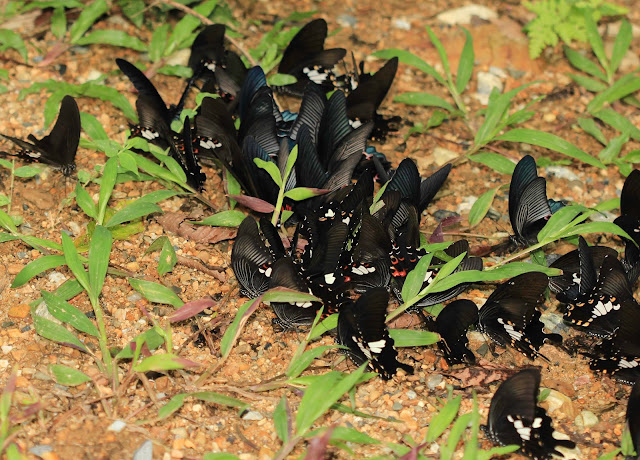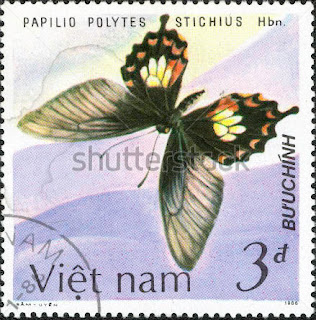Number: 151
Family: Nymphaliidae
Sub-Family: Nymphaliinae
Sub-Family: Nymphaliinae
Species: Hypolimnas bolina (Linnaeus, 1758)
Common name(s): The Common Eggfly, Great Eggfly, Blue Moon Butterfly
Photography location: Hanoi City
The genus Hypolimnas comprises more than 30 species. It is represented in Vietnam by 2 species viz. bolina and misippus.
Hypolimnas bolina has many subspecies and forms in Oriental region. It is a very common butterfly, extremely adaptable, which can be found in many habitats dominated by anthropogenic activities.
Hypolimnas bolina has many subspecies and forms in Oriental region. It is a very common butterfly, extremely adaptable, which can be found in many habitats dominated by anthropogenic activities.
Male Hypolimnas bolina
Note white subapical spots on FW and purple-washed white discal patches on both wings
Male shows very strong territory habit. Whenever any butterfly fly into its territory, it chases away them aggressively. Then it always returns back to the same spot
Male, underside
Another male specimen
The female, somewhat larger than male and without "white moons" on wings
This individual is feeding on Chromolaena odorata, an invasive shrub native to South and Central America - but exceptionally attractive to butterflies
This individual is feeding on Chromolaena odorata, an invasive shrub native to South and Central America - but exceptionally attractive to butterflies
















































